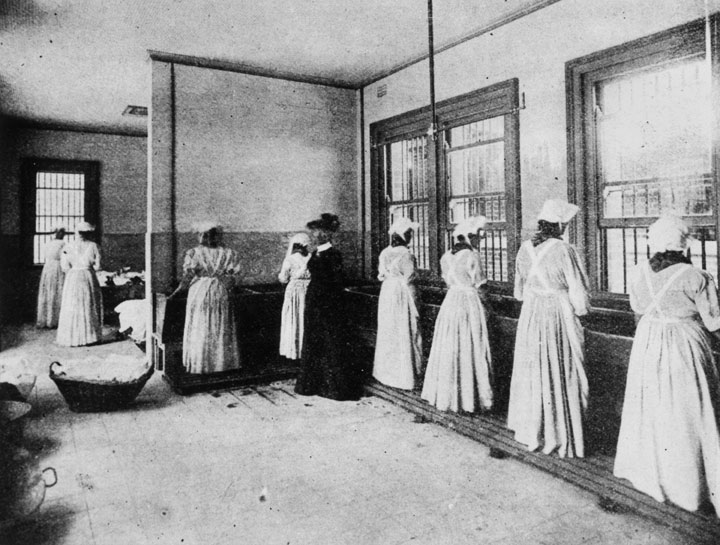 Women prisoners in the laundry at Boggo Road Gaol, 1903
Women prisoners in the laundry at Boggo Road Gaol, 1903
TLF ID R9660
This black-and-white photograph from the 28 November 1903 edition of the 'Queenslander' shows eight women prisoners and one supervising female warder in the internal laundry of the new State Prison for Women on Boggo Road, Brisbane. The prisoners, dressed in their summer uniform of long dress, apron and mob-cap, all face away from the camera. The majority work over fixed washing troughs near barred windows and stand on wooden slatted duckboards. In the background others sort linen. Cane baskets can be seen on the floor.
